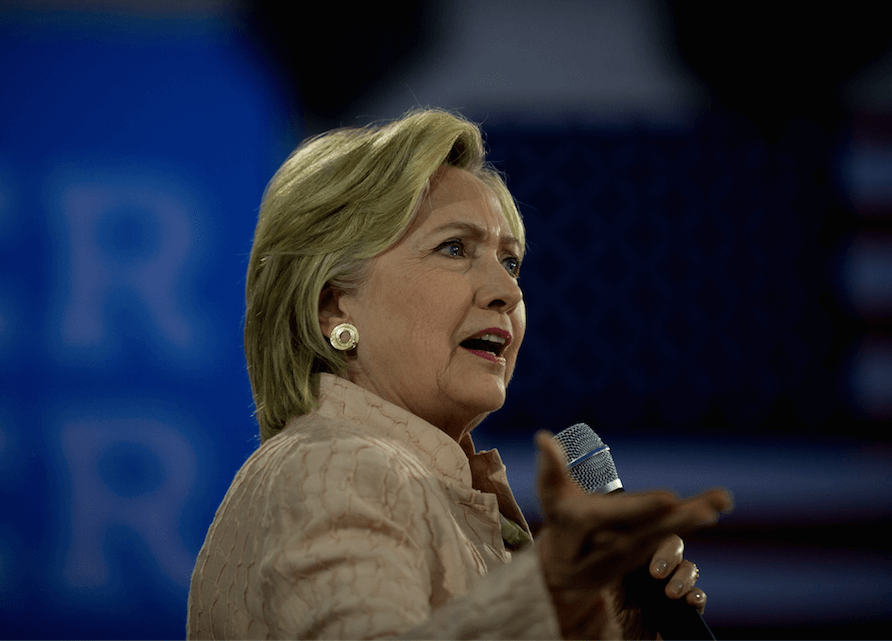The Hillary Clinton job creation plan focuses on a few key issues facing Americans today, and particularly the middle class.
The promise
“My top priority is create an economy that works for everyone, not just those at the top, which is why I’ve set five ambitious goals to get us there,” Clinton said while visiting Scranton, Pa. on a campaign stop on August 15. “First, we are going to make the biggest investment in new, good-paying jobs since World War II.”
[slideshow_lib slideshow_id=”19182″ _index=”0″]
If there’s one thing Americans know by now, it’s what to expect from the Clintons, who have been a familiar family in American politics for decades and, for that reason, don’t always have the best record with some voters. Fact-checking website, PolitiFact, which ranks politicians’ statements on a scale from “pants on fire” to “true,” rated Clinton’s statement as “half true.” Here’s why.
Let’s talk jobs
The key elements of Clinton’s job plan include investing in infrastructure and the manufacturing industry, switching to clean energy, cutting taxes, increasing the minimum wage, and supporting technological research and advances.
Politico reports that Clinton’s proposed infrastructure and manufacturing program will cost $275 billion, but that this proposal won’t help the millions of Americans currently working low-paid service jobs.
The proposed policy will, by and large, not help those working in the construction industry, the leisure and hospitality industry, or wholesale and retail. Politico reports that Clinton’s proposed infrastructure and manufacturing program will cost $275 billion, but that this proposal won’t help those currently working low-paid service jobs and that a subsidized job program may be more directly beneficial to the manufacturing sector.
Let’s talk taxes
Roberton Williams, a fellow at the Urban Institute-Brookings Institution Tax Policy Center (an independent tax policy analysis center), notes that Clinton’s economic proposals are similar to what we have seen under the Obama administration.
Williams added that Clinton’s policy would include a tax hike that would mostly be felt by the upper class and that her plan could increase revenues by $1.1 trillion over 10 years.
Let’s talk higher education
Clinton’s plan also extends to higher education, where access has been limited among many middle- and lower-class Americans due to the high costs of a college degree. On the one hand, she has suggested making public college education debt-free and has suggested that community college should be totally free, which would allow access to higher education without a giant price tag for students.
On the other hand, Clinton has discussed raising the minimum wage on a national scale, which, in connection to higher education, is meant to prevent an “either or” choice between school and a job, and also raise income for graduates.
[postquote]
When it comes to debt forgiveness and higher education, she has focused a lot of her attention on entrepreneurship. According to US News, Clinton said, “If you get that enterprise up and going, we want to forgive part of that debt because we need more job creators and more young people starting businesses.”
The skeptics
Even with all of her proposed plans for the economy and job creation, some middle-class voters have remained wary of the candidate. For instance, Kirk Voorhees, who works in the trucking industry, told Vox:
We lost our jobs in the recession. We lost our homes, and after that they bailed out the bankers and gave them trillions of dollars so they could keep their bonuses while the working man hasn’t gotten a raise in 25 years. … I find it hard to believe she’ll do anything for me after taking all this money from these special interest groups.
Takeaway
Clinton has offered a more specific and detailed economic and job creation platform than her Republican counterpart, even if it addresses some industries more specifically than others.
Further, the total numbers of the plan remain under review. Clinton has said that her proposed economic and jobs platform would add 10 million jobs to the market, while CNN Money notes that even if she did nothing, “the economy would still add 7.2 million jobs.”
The Democratic nominee addressed college affordability through tuition and minimum wage proposals, and her program is particularly geared towards entrepreneurs and business majors.
Have something to add to this story? Comment below or join the discussion on Facebook.
Header image: Getty









































